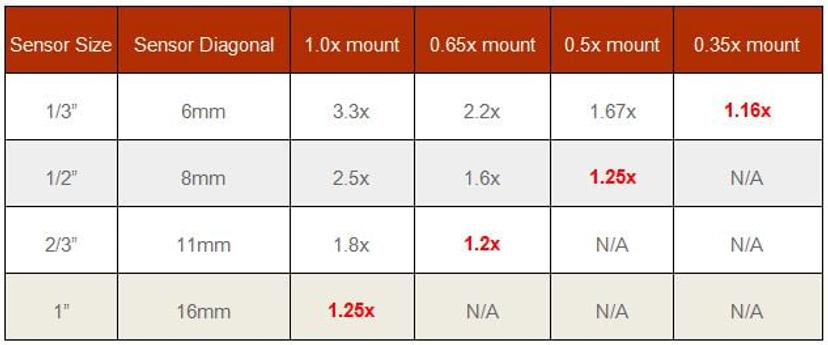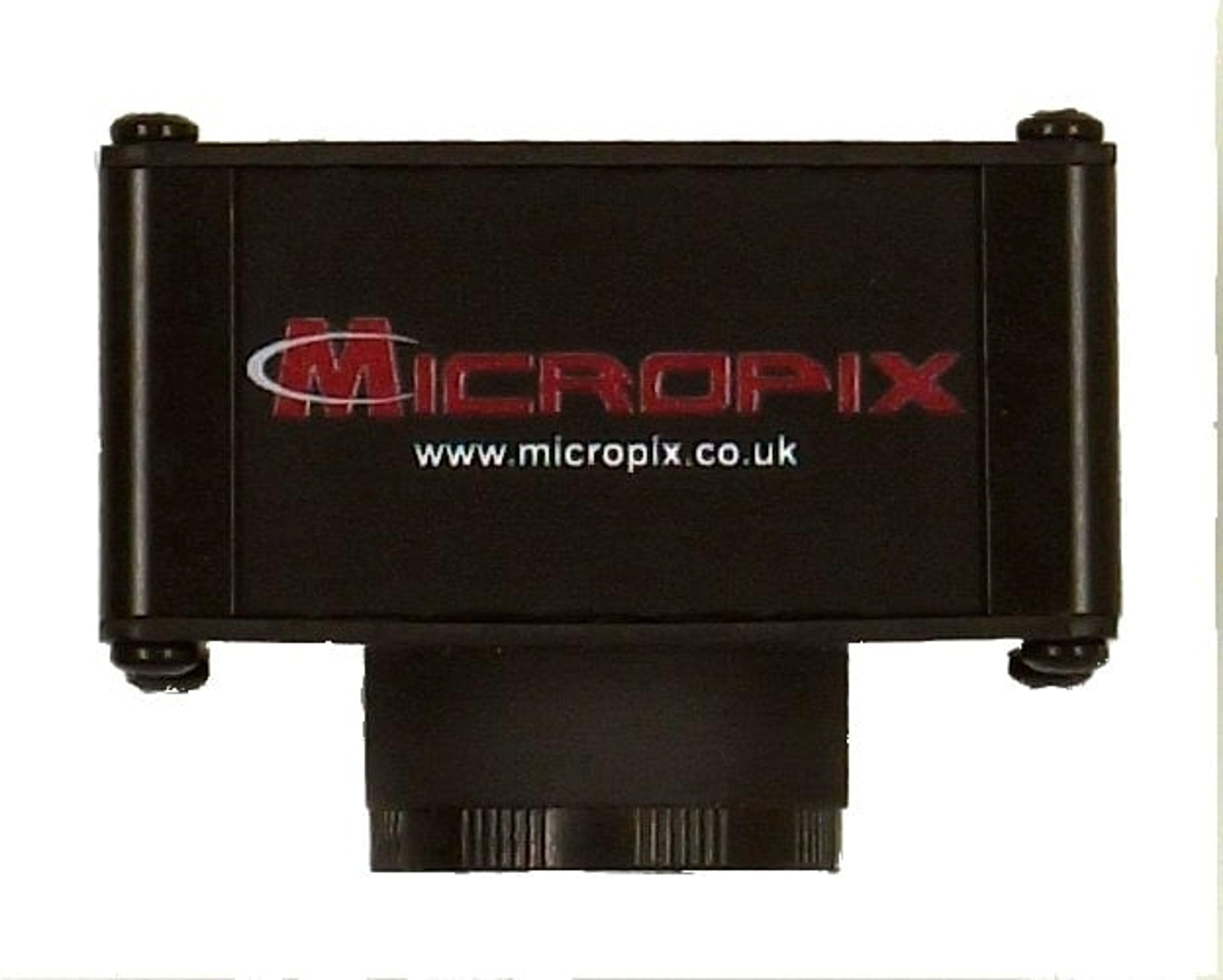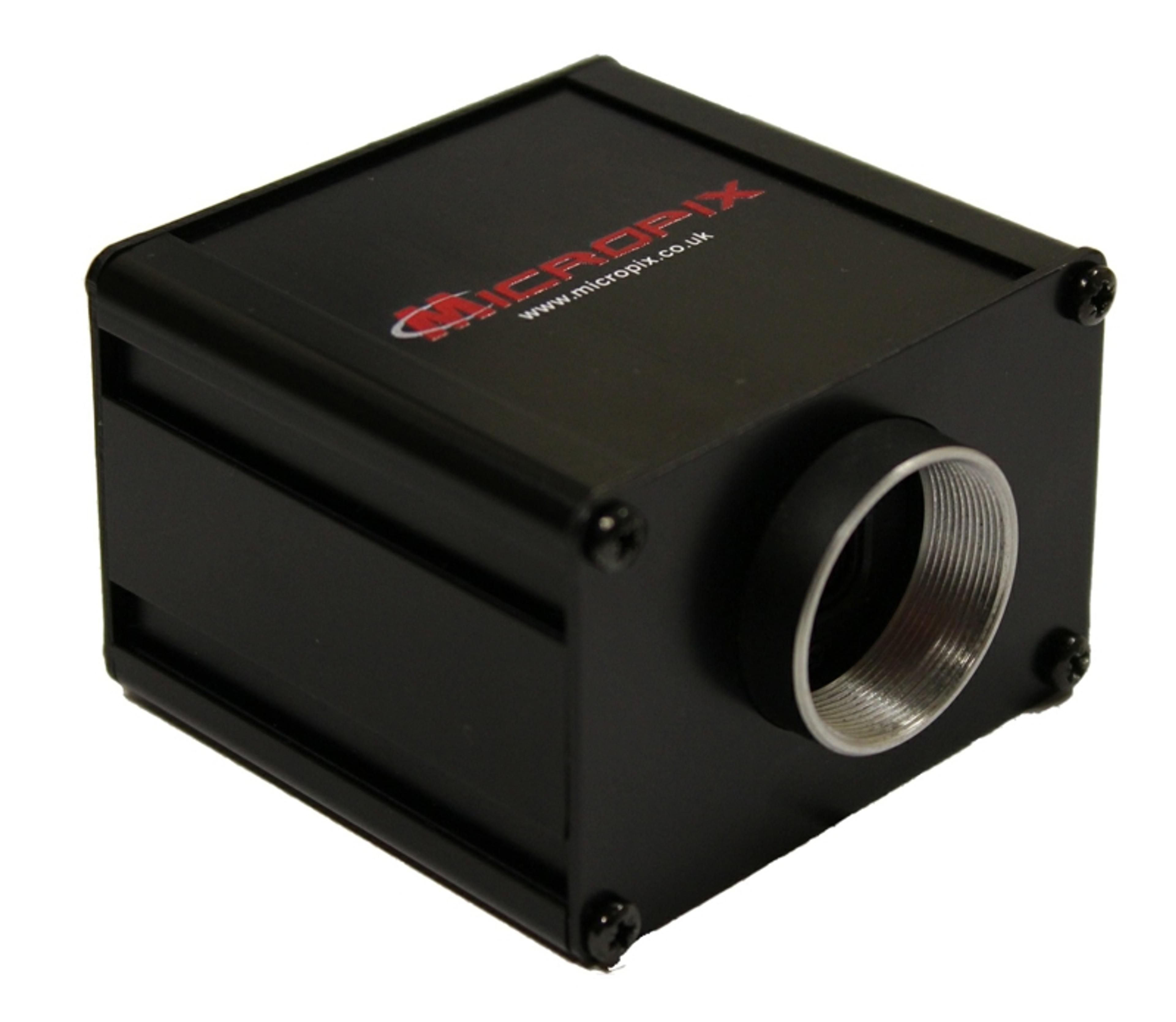Digital Camera to Microscope C-mount Adapters Explained
21 Nov 2016
0.5x c-mount for an Olympus microscope and 1x c-mount for an Olympus microscope
In order to attach a digital camera to the trinocular port (a monocular microscope has a single eyepiece, binocular has 2 eyepieces and trinocular has 2 eyepieces and a separate camera port) of a microscope you need the correct mount / adapter. Nearly all dedicated microscope digital cameras use a standard c-mount. A c-mount is 1" (25.4mm) in diameter with 32 threads per inch. C-mount adapters are microscope specific so one end is a standard c-mount thread and the other depends on the make and model of the microscope.
C-mount adapters are supplied with or without optics. The purpose of the optics is to match the c-mount adapter with the size of the sensor within the digital camera in order to maximize the field of view. There is a fundamental problem with fitting digital cameras to microscopes - camera sensors are rectangular and microscope optics are circular so you can never achieve the same field of view on the camera as the one you see down the eyepieces of the microscope.
1x c-mount adapters do not have any optics making them the cheapest type of c-mount adapter. The camera field of view will simply depend on the size of the camera sensor . This means that when using a camera with a 1/2" sensor and 1x c-mount the view on the screen will be roughly 2.5x "magnified" - so using the 10x objective on the microscope will look like a 25x objective on the screen (Fig 1).

Fig. 1 - Microscope field of view at 10x and the camera field of view with 1" and 0.5" sensors
In order to counter this magnification effect you can match the camera sensor with the c-mount adapter as follows (Table 1). E.g. a camera with a 1/2" sensor is best matched with a 0.5x c-mount:

Table 1 - Optimum adapter for maximum field of view
If you use a mount that "over de-magnifies" e.g. a 0.35x c-mount with a 1/2" camera sensor, then you will see shading and distortion at the corners of your image called vignetting. This effect can also occur if there are several optical units between the sample on the microscope and the camera including teaching arms and ergonomic heads - simply use a less de-magnifying c-mount adapter to overcome this.
Just to complicate matters, camera sensors are made with different aspect ratios. The most common being 4:3, 5:4. and 16:9 (so called "high definition"). An interesting recent innovation in microscope camera technology is the production of square sensors. New square sensors are available in 1" and 1/2" formats and are the optimum shape to maximize field of view when used with circular microscope optics (Fig 2).

Fig. 2 - Field of view comparison with different camera sensor aspect ratios: 1" 4:3 sensor, 1"5:4 sensor, 1" 16:9 sensor and 1" 1:1 sensor
Finally, most modern c-mount adapters are focusable. This allows you to focus your microscope and the adjust the focus of the c-mount so that the image from the camera is also in focus (making the camera parfocal with the microscope) - a very useful feature.
Article by Magnar Slocombe (magnar@micropix.co.uk), Managing Director of Micropix Ltd (www.micropix.co.uk). August 2015.



